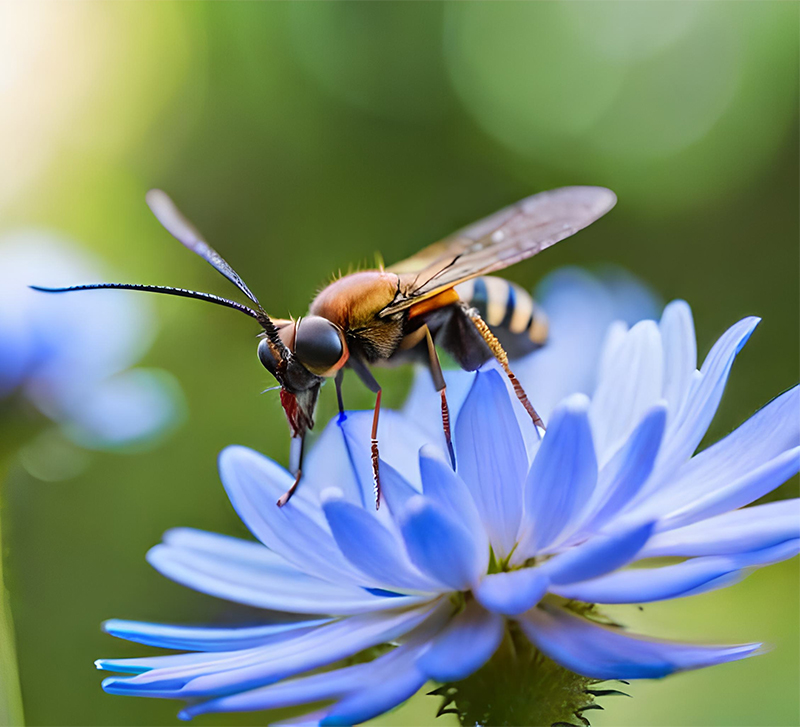Biodiversity is an increasingly present topic in our daily lives. One of the factors motivating this debate is the growing impact of climate change, which reinforces the importance of preserving the environment.
By: BASF
April 2024

Biological diversity is, in fact, the coexistence between the various forms of life present on our planet, which are essential to maintain ecological balance and the ecosystems of which they are part.
The participation of agribusiness in caring for the environment is increasingly relevant. In that sense, research and available technologies play a very important role in preserving the environment, making the crop productive and sustainable.
To better understand how biodiversity relates to agriculture, see below.
Biodiversity: what is the concept?
When we talk about biological diversity, what we have in mind is a broad concept that encompasses all forms of life, from microscopic and simple beings to the largest and most complex, creating a chain of relationship and dependence between them and the environment.
It is biodiversity that allows life to develop, evolve and exist, creating relationships between life forms in the natural environment and maintaining ecological balance. Without this relationship, our planet as it is and life as we know it would not exist.
According to the United Nations – UN – we understand this coexistence and codependency when we analyze the roles of each species, such as plants, which are responsible for generating oxygen, and insects, such as bees, which are essential for pollination.
¿Why is it so important?
Biodiversity is responsible for the balance link between species. These relationships occur between microorganisms, animals and plants in their environment, generating services and inputs for the needs of each living being, such as the decomposition of organic materials that then serve as a source of nutrients for another plant to grow, for example.
Another important relationship promoted by biodiversity is pollination. Pollinators capture the nectar of flowers to produce their honey, and while they fly from flower to flower, they carry out pollination that allows the reproduction of various species. Therefore, bees and other pollinator species are essential for agricultural activity.
BASF supports projects around the world that develop initiatives that care for the environment and protect biodiversity, such as the Project that promotes harmonious coexistence between bees and soybeans, in association with the Brazilian Agricultural Research Company (Embrapa) and Alas para el Campo (wings for farming) about which, below, we can learn a little more.
In addition to the benefits already mentioned, biodiversity also contributes to the quality of soils, as well as the preservation of species essential for food production.
The intrinsic relationship between agriculture and biodiversity
Agriculture and biodiversity are two fundamental aspects for the existence and survival of all forms of life and currently, the efforts of the agricultural sector to implement strategies that benefit the environment have been increasingly present.
The creation of initiatives that bring positive impacts for rural producers and the ecosystem are the starting point for the relationship between both areas to be increasingly beneficial.
Droughts, pests, diseases, weeds and other challenges are common in traditional agricultural systems. With the advancement of new technologies and systems that connect the best practices for the sector, we can see the success that the most strategic actions have brought to agriculture as a whole.
To overcome these challenges, it is necessary to adopt sustainable agricultural practices. Sustainable agriculture is a way to balance food production with the preservation of the environment and biodiversity.
It includes techniques such as conservation agriculture, which preserves the biodiversity of soil, water and fauna. Furthermore, the integration of crops, livestock and forestry is an effective way to preserve biodiversity and increase food production.
The advantages of actions such as efficient water management, the use of renewable energy sources and the use of agricultural techniques adapted to climate change, such as the planting of plant varieties resistant to drought and heat, are points that contribute a great positive return to those who use them.
BASF and the commitment to biodiversity
Caring for the planet's biodiversity should no longer be treated as a utopian practice, but as a real and urgent change in our way of producing food.
It is necessary to look for solutions and technologies that allow the relationship between agricultural production and the ecosystem, so fundamental for the preservation of species and the improvement of crop productivity. This topic is so important to us that we have two focus projects:
BASF and Embrapa Bee Project

Promoting "harmonious coexistence between soy producers and beekeepers" is the focus of this BASF project in association with Embrapa, which aims to build standards and offer technologies that allow better use of soy production, preserving the hives.
It is necessary to ensure that the solutions used in soybean production do not negatively affect the improvement of bees and their environment. This is possible by adopting sustainable agricultural practices, such as the use of selective pesticides and the application of crop rotation systems.
In addition, it is important to guarantee the preservation of natural areas near soybean crops so that bees can feed and reproduce. Thus, the project allows this healthy interaction to occur, increasing the productivity of soybeans and guaranteeing the protection of apiaries.
You may be interested in: Course Good Beekeeping and Agricultural Practices for the Health of Pollinators
Wings for the field
Butterflies are also important pollinators, that is, they have the mission of helping the reproduction of various plant species, including agricultural ones. And to do this, a project was created that focuses on pollinators, such as the monarch butterfly, raising awareness about their preservation.
This initiative was conceived and implemented with the support of farmers in the region. The objective is to protect the monarch butterfly and other pollinators on their migratory route from Canada to Mexico. By restoring and conserving native plants that provide habitat and food, agriculture benefits from high pollination.
Among the main goals achieved in our years of operation, the installation of more than 17 thousand square meters of pollinator gardens stands out, as well as more than 400 thousand square meters of other spaces for the protection of pollinators such as refugia and floral strips, which are distributed throughout Mexico, specifically, in several of the cities through which the monarch butterfly travels such as: Tijuana, Hermosillo, Culiacán, San Luis Potosí, Guadalajara, Apodaca, Altamira, Silao, Cuautla, Puebla, Tizayuca, Tultitlán, Lerma and Mexico City. This initiative also has an impact in El Salvador, Guatemala, Costa Rica and the Dominican Republic.
Together, we can transform agriculture's relationship with the environment and ensure the best results in the pursuit of a better world!
































